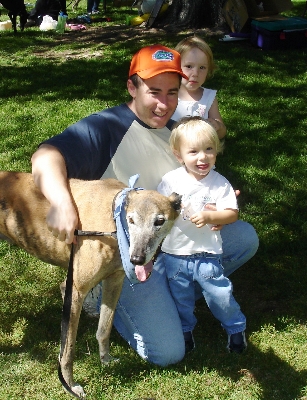
Lessons clear in parvo alarm
Parvovirus. The word alone strikes fear in the hearts of dog owners, especially of puppies. Of course, it’s not a new fear, since the virus was first described in dogs in the late 1970s. But it hit the headlines again this summer. Funny thing is, if you look at last year’s headlines, you will see similar stories with headlines almost verbatim, things like:
“Experts warn of a deadly disease running through dog parks” “canine virus on the rise”
“…all city parks are a hotbed of the virus this year.”
Let’s take a quick look at this disease, bearing in mind that “There is nothing new under the sun.”
When the virus was first described in the late ’70s causing severe gastrointestinal symptoms in dogs, it was named CPV-2 (canine parvovirus type-2). In the early 1980s a slightly different strain was isolated, called CPV type-2a. We discovered that the virus continues to mutate and evolve, so now we have multiple strains out there. Two of the more important are CPV type-2b and type-2c.
Even though we know about these strains and track their mutations, we don’t completely understand how they affect our dogs. One study showed that current vaccines might not protect dogs against the newest strains, but other studies have shown the opposite.
For now, the assumption is that current tests can find parvo infections almost all the time, and current vaccines (from a reputable manufacturer) will protect most dogs most of the time.
If a dog (usually less than a year old) does get infected with the parvo virus and becomes ill, the symptoms are generally gastrointestinal. The puppy may start out being lethargic or not eating well, but we usually see diarrhea, vomiting, abdominal discomfort, or any combination of these eventually.
The virus itself is not fatal, but the dehydration, starvation, and concurrent bacterial infections will kill a young dog if left untreated. That is why, if we diagnose early and treat aggressively, we can usually pull the dogs through it.
But not always. There will always be a small number of patients that, for whatever reason, die in spite of our best efforts. Fluid therapy, nutritional support, anti-vomiting medication, and antibiotics are the hallmark therapies. Different veterinarians have success with adding other treatments as well.
A study from southern Arizona just looked at about 53 dogs that were parvovirus positive, and reported that 45 percent of the dogs were less than 4 months old; 41 percent were 4 to 11 months old; and just 14 percent were at least a year old. A large share, 73 percent, had CPV type-2c; the remaining 27 percent had type-2b.
What can we conclude from all this? Pretty simple, actually:
• Vaccinate any female dog that may give birth, so her milk will protect her newborns for some time.
• Vaccinate all puppies at 8 weeks or older, either for parvovirus alone or in combination with distemper; and younger than 8 weeks if their history is unknown or they have been away from their mother.
• Vaccinate a puppy more than once, usually more than twice.
• Spend the money to see your vet for a good vaccine from a reputable company that has been handled and stored properly. Bargain prices and no-name brands are a big gamble.
• If you do suspect a parvovirus infection, especially in a puppy, seek medical attention quickly. The earlier you start treatment, the better its chances.
This is one time where the saying has never been more true, “An ounce of prevention is worth a pound of cure.”
Daniel Levenson operates the Southwest Veterinary Medical Center at the south end of Corrales Road. Visit his website at mysouthwestvet.com.
